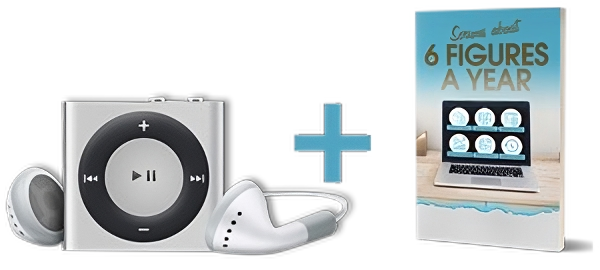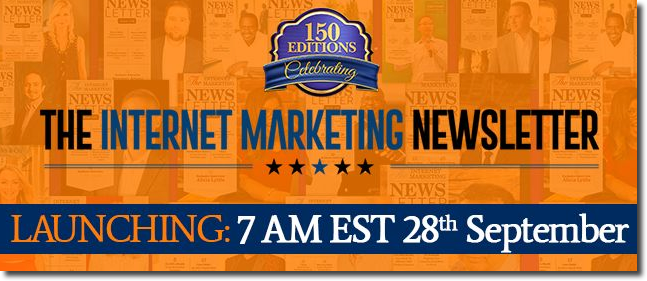Over the last couple of weeks, we have received a higher-than-average number of questions from customers and subscribers asking us what it really takes to release or ‘launch’ a new information product online.
When it comes to launching new products, there are two schools of thought.
- Launch it with a big fanfare over a short period of time then close the doors a few days later restricting the amount of people who can buy the product or join the program.
- Launch it right away with or without fanfare and keep it open indefinitely allowing anyone to buy or join at anytime.
Both methods are fine.
There is no right or wrong way to launch a product necessarily, each method suits different products, programs, and services, and sometimes they simply suit different needs and times for the product owners.
One method can pull in a lot of money in a short period of time, but can take more work to coordinate and pull off; the other can earn a lot of money over a longer period of time and requires less work.
The first method is quite intense and hectic; the second method is calmer and more relaxed.
The question is…
… Which is best for you?
If you are thinking of choosing one method over the other based purely on how much money you can make, I suggest that you don’t.
Yes, it is true that some of the big launches that involved a week of free workshops and live tutorials have made millions of dollars… but so have many of the softer launches.
You see, the big noisy launches have a ‘secret’ something in common with the softer quieter launches and that is they both share plenty of pre-warming up content and they use affiliates to promote the product during the launch.
The big difference is that the softer launches don’t close the doors after a specific period.
It does depend on what the product is but I have never understood the reason as to why a product owner would want to stop more people from purchasing an online digital product that doesn’t need you to do anything.
If it is an online course/program which has a specific start and end date with a set of ‘live’ lessons that follow a plan, then yes, you don’t want new people to come in halfway and start asking about the lessons they have missed.
However, if what you are selling is a course with a series of videos that have been pre-recorded and added to a member’s area, then it doesn’t matter when it was purchased.
You can use other methods of creating urgency and scarcity without having to close the doors permanently to the actual product.
Publishing warming-up content as part of any launch and using affiliates to promote your product during launch is a great way to get a lot of sales in a short period of time whichever method you use, but it is still great to get sales coming in weeks, months and even years after that main launch has ended.
The other important thing to remember is that every piece of content that you publish should be created to be ‘useful’ and to ‘warm’ people up to the products you sell, and not just the content that is published over a one-week launch period.
A launch is really nothing more than putting a product live online.
That’s it!
It is getting it out there for people to buy.
The week-long launches which close after a specific time are more suited to those who offer coaching and mentoring.
Because they are working directly with people, they can only manage a specific number.
Yes, you can have thousands of people connect to a live online webinar or tutorial, but if those thousands of people have questions that need answering, you could lose a lot of time replying to messages and emails.
Mentoring and coaching is not as simple as just doing a live tutorial or talk online for an hour every other evening. It requires interaction, hand-holding, advising, and answering questions and if you don’t have a team of people to help, you could quite easily become snowed under with questions and support requests.
So for mentoring and coaching programs where you deal directly with people live, a week-long live launch that insists on closing the doors five or seven days after the doors were open is probably the best option.
But for those who create a course or program where all of the advice and training has been pre-recorded as videos and laid out in PDF manuals and checklists, the continuous launch is probably best.
Yes, of course, you want to make as many sales as possible during the initial launch, but with the continuous launch, you are publishing content that drives people to your sales page resulting in those wonderful sales that happen at any time of the day or night week, months or even years after the initial launch.
There is nothing better than receiving a notification telling you that someone has just purchased your course which you published a year ago and that you don’t need to do anything other than enjoy the money earned.
That is what I call packaged knowledge.
You create a product around what you know and you then sell it to people where they learn everything from either reading it in an eBook or/and watching pre-recorded videos.
You do not need to do anything other than answer the odd one or two support emails.
It is possible to make just as much money from those products as it is with products that have a five-day or week-long ‘live’ launch which requires live workshops or participation-focused Facebook groups.
Part of the marketing myth surrounding these big product live launches is how much money they actually earn.
Some marketers love to tell you that their last launch earned hundreds of thousands of dollars or even a cool million plus, but they fail to tell you that at least half of that is to be paid out to affiliates who promoted it for them and so much of that money needs to be paid to a team of people who helped make the week-long ‘live’ launch happen.
The figures quoted are generally gross sales.
The net profits, although they are decent, are nothing as exciting as the gross sales figures many marketers like to tell you about.
The continuous open-door product can generate the same amounts of money, if not more, than those ‘live’ launch products often with less money to pay out.
Sales can happen 365 days of the year for several years so you can easily make a lot of sales without having to hand over large amounts to affiliates like you do during the initial launch.
You should carefully choose which style of launch you use based on what type of product you are selling and what you want from your product.
Do you want continuous passive sales?
Or are you going to be working directly with people and so want to close the doors once you have had a specific number of buyers?
Either launch is good, you just need to use the one that is right for you.
Interested in learning more about launching your own product online?
Then keep your eyes peeled for further articles and emails over the next 7-10 days as I pull back the curtain on two recent product launches that we held in the last two months…
… and how each of them is now on target to pull in about a hundred grand in the next 12 months.
Claim Your Free MP3 And PDF Training: The 3-Part Plan To Topping $100,000 Per Year In Profit
Enter your name and email address below to receive a new lesson delivered to your inbox once a week. Your first lesson will be delivered immediately.

Privacy Policy : We value your privacy. You can unsubscribe from receiving future emails with 1 click at any time.



